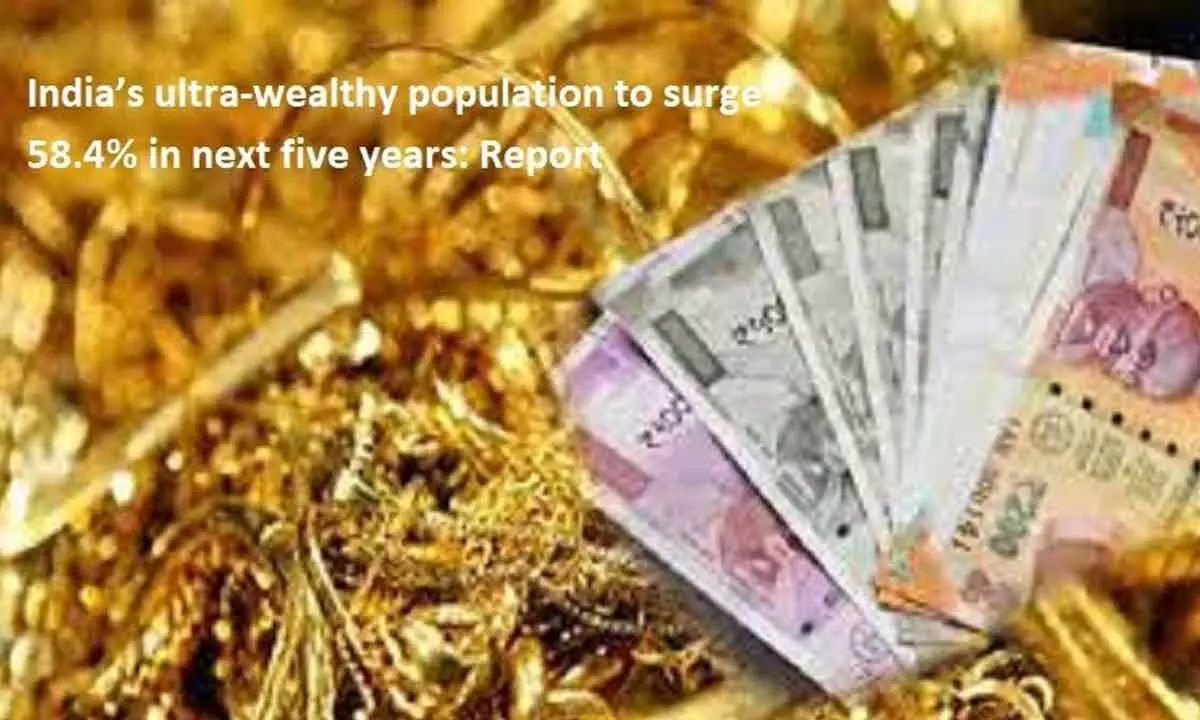India’s ultra-wealthy population to grow by 58.4% in next five years
The UAE was the fastest growing country with an 18.1% increase
image for illustrative purpose

A Knight Frank’s latest issue of the ‘The Wealth Report 2023’ points out that India’s ultra-high-net-worth individuals (UHNWI) with a net worth over $ 30 million is expected to rise by around 58.4% in the next five years from 12,069 in 2022 to 19,119 individuals in 2027. India’s billionaire population is expected to go up from 161 individuals in 2022 to 195 by 2027. The Indian high-net-worth-individual (HNI) population, with asset value of $ one million and more, which was recorded at 797,714 persons in 2022 will also rise to 1.65 million, thereby recording an impressive 107% in a five-year period.
In 2022, the global population of UHNWIs declined by 3.8%, after a record climb of 9.3% in 2021, as the wealth and the investment portfolio of the ultra-wealthy were impacted by economic slowdowns, frequent rate hike and rising geopolitical uncertainties.
The trend was noted in India too, where the UHNWI population registered a decline of 7.5% YoY in 2022 over 2021. For India, apart from the rise in interest rates, the appreciation of the US dollar also impacted the growth of wealth. However, the HNI population remained on a growth path registering a YoY growth of 4.5% in 2022 and India’s billionaire population rose by 11% YoY in 2022 compared to the previous year.
Asian dominance in the emergence of new wealthy saw a slowdown last year with UHNWI population declining by 6.5% YoY in 2022. However, three out of the top ten highest growth spots were held by Asian markets of Singapore, Malaysia and Indonesia recording between 5% and 7% rise in the ultra-wealthy population. Further, this region is estimated to witness a growth of close to 40% in its ultra-wealthy count in the next five years. By 2027 Asia will be home to 210,175 UHNIs taking over Europe and standing only second to Americas.
Meanwhile, the Middle East was the standout region with 16.9% growth in UHNWIs (those with $30m+ in net assets) in 2022. The UAE was the fastest growing country with an 18.1% increase, bringing the number of UHNWIs to 1,116. Saudi Arabia was not far behind with 10.4% annual growth. Africa also proved resilient with 6.3% growth in UHNWIs whilst, Australasia and the Americas remained largely static with 0.7% and 0.2% growth, respectively.
Europe was the hardest hit region with declines of 8.5% in the number of UHNWIs. Four-fifths of the region’s countries experienced a decline in their UHNWI population. Of the handful of markets seeing their UHNW population increase were Ireland with 3.9% rise and the wealthy safe haven of Monaco with 0.9% growth. While the UHNWI population contracted last year, the number of high-net-worth individuals (HNWIs), those with $ one million or more in net assets, expanded by 2.9% to almost 70 million worldwide. The top three countries for HNWI growth were Malaysia, Brazil and Indonesia.
Liam Bailey, global head of research at Knight Frank said, “The fall last year in the total number of UHNWIs globally was due in large part to the weak performing equities and bond markets. On the flip side however, 100 prime residential markets globally saw average price growth of 5.2% and luxury investment assets grow 16% which helped steady the decline. The dip is just that. Taking the longer view, the global UHNW population grew by 44% in the five years to 2022 and, although we forecast growth to slow to 28.5% over the next five years, the recent dip will prove short lived as we adapt to a new economic environment.”
According to a study based on the Knight Frank’s Wealth Sizing Model, the total net worth required by an individual to be among the top one per cent wealthy individuals in India is estimated at $ 175,000. The wealth needed to join their ranks varies sharply from country to country.
In Monaco, which has the world’s densest population of super-rich individuals, the entry point for the 1% club is $ 12.4 million. Interestingly this is double the amount needed in the second placed Switzerland, which has an entry point at $ 6.6 million. For Asia, Singapore has the highest threshold with $ 3.5 million followed by Hong Kong at $ 3.4 million.

